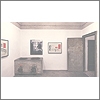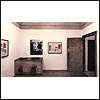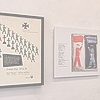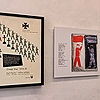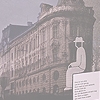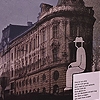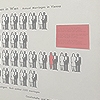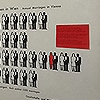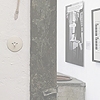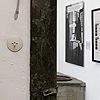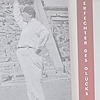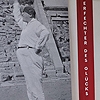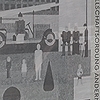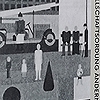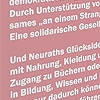Who was Otto Neurath?
Neurath was born in 1882 in Vienna and his work was incredibly multifaceted. He worked as a national economist, sociologist, visual statistician, popular educator, philosopher and was an important member of the Vienna Circle. He was considered one of the most influential social scientists of his time.
Today, Otto Neurath is primarily known for his work in visual communication and his development of the "Vienna Method of Pictorial Statistics," later called "ISOTYPE" (International System Of TYpographic Picture Education). He is regarded as the inventor of "speaking signs" — pictograms.
Neurath developed a visual language that conveys information through simple symbols and pictographs. His goal was to present complex statistical data on economic and social contexts in a way that was easily understandable, even for people without specialized knowledge. Neurath's aim was to promote knowledge — knowledge for all people, regardless of their origin, language, or education.
In 1925, he became the director of the newly founded "Museum of Society and Economy." There was no dedicated museum building, so he presented his displays in the People’s Hall of Vienna's City Hall, as well as in branch exhibitions, such as in the council house "Am Fuchsenfeld" in Meidling. Soon, however, there were branches of his museum across Europe, in cities like Berlin, Amsterdam, London, and Moscow. There, he displayed "tailored" exhibits on topics that were of particular socio-political relevance to those cities.
At the Museum of Society and Economy, which Neurath saw as a place for learning and communicating societal developments, he was supported by a large team in his work. Notably, his later wife, Marie Reidemeister, and the graphic designer Gerd Arntz stand out in this context.
In 1934, Neurath emigrated to The Hague to escape the Austrofascist regime, and when German troops invaded the Netherlands in 1940, he fled with Marie Reidemeister to England. There, he continued his work in Oxford with his characteristic energy and drive until his sudden death in 1945.
(Explanatory text on the works in the laundry room)
………………………………………………………………….
Otto Neurath and Happiness
Neurath's concept of happiness has nothing to do with esoteric ideas of salvation.
He spent his entire life working to make a special utopia come true: A happy life for all. This goal, which Neurath saw as entirely achievable, was not characterised by fantastical or unrealistic dreams. He aimed to achieve human happiness through rational, scientifically grounded, and democratically organized planning. By supporting institutions and public services, and through collective effort, a fulfilling life should be attained. A solidaristic society promotes the well-being of its members.
And Neurath’s ideal of happiness does not only include providing people with food, clothing, and adequate housing. It also encompasses access to books and the opportunity to attend the theater. Neurath saw education, knowledge and culture in particular as a key to a higher quality of life, as this is the only way people can make better decisions that lead to a more fulfilling life.
In addition to Otto Neurath’s positive life goals, which were based on empathy and a love for humanity, another of his character traits should be mentioned: his unwavering optimism and his sense of humor. He overcame many severe blows of fate in his life with resilience, and in most of his photographic portraits, Neurath appears cheerful. He often caricatured himself as an elephant at the end of his letters.
“Yours sincerely,” said the elephant, often with a bouquet of flowers in its trunk.
One is happy to respond to Otto Neurath: Warm greetings to you as well, you advocate of happiness!
(Explanatory text on the works in the large studio space)
